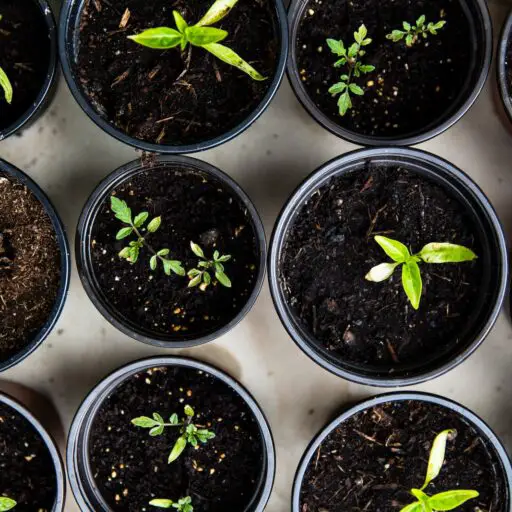Support our educational content for free when you purchase through links on our site. Learn more
Have you ever wandered through a community garden and felt an overwhelming sense of joy? 🌼 These green spaces are more than just patches of soil; they are thriving ecosystems that bring people together, promote health, and nurture our environment. In this article, we’ll explore 20 incredible benefits of community gardens that will inspire you to dig in and get involved! From boosting local economies to enhancing mental well-being, community gardens are a treasure trove of advantages waiting to be uncovered.
Did you know that community gardens can increase property values by up to 9.4%? Imagine transforming your neighborhood while cultivating friendships and fresh produce! Whether you’re a seasoned gardener or just curious about the green thumb lifestyle, this post is packed with insights and practical tips that will motivate you to start or join a community garden today.
Key Takeaways
- Access to Fresh Produce: Community gardens provide affordable, nutritious food, especially in food deserts.
- Social Connections: These gardens foster relationships and strengthen community bonds.
- Health Benefits: Gardening promotes physical activity and mental well-being, reducing stress and anxiety.
- Environmental Impact: Community gardens enhance biodiversity and promote sustainable practices.
- Educational Opportunities: They serve as living classrooms, teaching valuable skills about gardening and nutrition.
Ready to start your gardening journey? 👉 Shop Gardening Tools on: Amazon | Walmart | Home Depot. Let’s grow together! 🌿
Table of Contents
- Quick Tips and Facts
- The Rich History of Community Gardens
- Top 20 Benefits of Community Gardening 🌱
- How Community Gardens Foster Community Spirit 🤝
- Environmental Impact of Community Gardens 🌍
- Health Benefits of Gardening Together 🌿
- Economic Advantages of Community Gardens 💰
- Educational Opportunities in Community Gardens 📚
- Tips for Starting Your Own Community Garden 🏡
- Challenges and Solutions in Community Gardening ⚠️
- Success Stories from Community Gardens 🌟
- The Role of Technology in Modern Community Gardening 💻
- Conclusion
- Recommended Links
- FAQ
- Reference Links
Quick Tips and Facts
Want to dive into the wonderful world of community gardens? Here are some fast facts:
- Did you know? The United States boasts approximately 18,000 community gardens. (Source: Tulane University) That means there’s likely one near you, bursting with fresh veggies and friendly faces!
- Starting your own community garden? How to Start a Community Garden at School: 9 Essential Steps 🌱 2025 is a fantastic resource.
- Best beginner crops for moderate climates? Think strawberries 🍓, blueberries, radishes, kale, and snow peas – all packed with nutrients and relatively easy to grow. (Source: Tulane University)
- Fun fact: Community gardens can increase surrounding property values by up to 9.4%! (Source: Patterson’s Community) Talk about a blooming investment!
The Rich History of Community Gardens

Community gardens, far from a recent trend, have deep roots 🌱 in our history. Think back to ancient civilizations – they were already harnessing the power of communal gardening!
- Early Allotment Gardens: In 19th century England, allotment gardens provided land for working-class families to supplement their diets.
- Victory Gardens: During World War I and II, victory gardens sprouted across the US and Europe, boosting morale and food security during wartime.
- The Rise of Urban Gardening: The late 20th century saw a resurgence of community gardens in urban areas, addressing issues of food access, social connection, and environmental awareness.
Today, community gardens continue to flourish as vibrant spaces for community building, education, and sustainable living. It’s inspiring to see how this age-old practice adapts and thrives in our modern world!
Top 20 Benefits of Community Gardening 🌱
We at Community Gardening™ are passionate about the transformative power of community gardens. Here’s why:
- Increased Access to Fresh Produce: Say goodbye to food deserts! Community gardens provide fresh, affordable fruits and vegetables, especially in underserved areas.
- Improved Nutrition and Health: Eating fresh, homegrown produce leads to healthier diets and can reduce the risk of chronic diseases.
- Physical Activity and Exercise: Gardening is a great workout! Digging, planting, and weeding provide a gentle yet effective form of exercise.
- Stress Reduction and Mental Well-being: Spending time in nature and nurturing plants has therapeutic benefits, reducing stress and improving mental clarity.
- Stronger Community Bonds: Gardens bring people together! Working side-by-side fosters a sense of belonging, shared purpose, and camaraderie.
- Reduced Crime Rates: Studies show that community gardens can contribute to safer neighborhoods by fostering a sense of ownership and collective responsibility.
- Environmental Stewardship: Community gardens promote sustainable practices like composting, water conservation, and reducing food waste.
- Increased Biodiversity: Gardens attract pollinators like bees and butterflies, supporting local ecosystems and biodiversity.
- Educational Opportunities: Gardens are living classrooms! They provide hands-on learning experiences about plants, nutrition, and environmental science.
- Intergenerational Connections: Gardening bridges age gaps, connecting youth and seniors through shared activities and knowledge exchange.
- Economic Empowerment: Some community gardens sell their surplus produce at farmers’ markets, generating income and supporting local economies.
- Job Creation: Urban agriculture initiatives, often linked to community gardens, can create jobs in gardening, food production, and distribution.
- Improved Property Values: Well-maintained community gardens enhance the aesthetic appeal of neighborhoods, leading to increased property values.
- Reduced Food Waste: Gardeners learn to appreciate and utilize all parts of their harvest, minimizing food waste at the source.
- Preservation of Cultural Heritage: Community gardens can be spaces to grow culturally significant plants and share traditional gardening practices.
- Increased Food Security: By supplementing household food budgets, community gardens contribute to greater food security, especially for low-income families.
- Enhanced Social Skills: Working together in a garden setting fosters teamwork, communication, and problem-solving skills.
- Increased Civic Engagement: Community gardens empower residents to take an active role in improving their neighborhoods and creating positive change.
- Access to Green Spaces: For urban dwellers, community gardens provide much-needed access to nature and green spaces, promoting well-being and relaxation.
- A Sense of Place: Community gardens create a unique identity for neighborhoods, fostering a sense of pride and ownership among residents.
How Community Gardens Foster Community Spirit 🤝
Have you ever noticed the infectious laughter and friendly chatter echoing from a community garden? That’s the sound of community spirit in action! Here’s how these green spaces cultivate a sense of belonging:
- Shared Purpose and Collaboration: Working towards a common goal – whether it’s growing a bountiful harvest or beautifying a neighborhood – creates a sense of unity and shared accomplishment.
- Breaking Down Barriers: Gardens are inherently welcoming spaces, bringing together people from diverse backgrounds, ages, and walks of life.
- Social Events and Gatherings: Many community gardens host potlucks, workshops, or volunteer days, providing opportunities for neighbors to connect and socialize beyond gardening.
- Building Trust and Reciprocity: Sharing gardening tips, tools, and even surplus produce fosters a spirit of generosity and mutual support among gardeners.
Environmental Impact of Community Gardens 🌍
Community gardens are green havens, not just for plants, but for the planet too! Here’s how they contribute to a healthier environment:
- Reduced Carbon Footprint: Locally grown food means shorter transportation distances, reducing greenhouse gas emissions associated with food transport.
- Sustainable Practices: Community gardens often embrace eco-friendly methods like composting, rainwater harvesting, and organic gardening, minimizing their environmental impact.
- Green Spaces in Urban Areas: Gardens transform concrete jungles into green oases, improving air quality, reducing the urban heat island effect, and providing habitats for wildlife.
- Soil Health and Conservation: Gardening practices like composting and cover cropping improve soil fertility, prevent erosion, and promote healthy ecosystems.
- Water Conservation: Many community gardens implement water-wise techniques like drip irrigation and drought-tolerant planting, conserving precious water resources.
Health Benefits of Gardening Together 🌿
Gardening isn’t just good for the soul; it’s a boon for your physical and mental health too! Here’s how:
- Physical Activity: From digging and planting to weeding and harvesting, gardening provides a full-body workout that improves strength, flexibility, and cardiovascular health.
- Stress Relief: Studies show that spending time in nature reduces stress hormones like cortisol and promotes relaxation. Gardening, with its gentle rhythms and connection to the earth, is a powerful stressbuster.
- Improved Mood and Mental Well-being: Gardening has been linked to reduced symptoms of anxiety and depression. The act of nurturing plants and witnessing their growth can boost self-esteem and provide a sense of accomplishment.
- Increased Vitamin D Levels: Spending time outdoors exposes you to sunlight, which helps your body produce vitamin D, essential for bone health, immune function, and mood regulation.
- Healthier Eating Habits: When you grow your own food, you’re more likely to eat it! Community gardens encourage the consumption of fresh fruits and vegetables, leading to a more nutritious diet.
Economic Advantages of Community Gardens 💰
Community gardens aren’t just about veggies and social connections; they can have a real impact on local economies! Here’s how:
- Increased Property Values: A thriving community garden can boost the curb appeal and desirability of a neighborhood, leading to increased property values for homeowners.
- Food Savings: Growing your own produce can significantly reduce grocery bills, freeing up income for other essential needs.
- Job Creation: Urban agriculture initiatives, often linked to community gardens, can create jobs in gardening, food production, distribution, and education.
- Support for Local Businesses: Community gardens often source their supplies, such as tools, seeds, and soil, from local businesses, boosting the local economy.
- Tourism and Recreation: Some community gardens become attractions in their own right, drawing visitors and contributing to local tourism.
Educational Opportunities in Community Gardens 📚
Community gardens are like living classrooms, bursting with opportunities to learn and grow! Here’s how they foster education:
- Hands-on Learning: From seed to harvest, gardening provides practical experience in plant science, ecology, and sustainable living.
- Nutrition Education: Growing your own food raises awareness about healthy eating habits and encourages the consumption of fresh fruits and vegetables.
- Environmental Stewardship: Community gardens teach valuable lessons about composting, water conservation, biodiversity, and the importance of protecting our planet.
- Intergenerational Knowledge Sharing: Experienced gardeners often share their wisdom with younger generations, preserving traditional gardening techniques and fostering a love for nature.
- Community Workshops and Classes: Many community gardens host workshops on topics like organic gardening, seed saving, permaculture, and food preservation, providing valuable skills and knowledge.
Tips for Starting Your Own Community Garden 🏡
Inspired to start a community garden in your neighborhood? Fantastic! Here are some tips to get you started:
- Gather Community Support: Talk to your neighbors, local organizations, and city officials to gauge interest and build a team of enthusiastic supporters.
- Find a Suitable Location: Look for a sunny spot with access to water. Consider vacant lots, parks, schoolyards, or even rooftops!
- Secure Funding and Resources: Explore grants, donations, or crowdfunding options to cover startup costs like tools, seeds, and soil.
- Develop a Garden Plan: Decide on the size and layout of your garden, considering factors like accessibility, sunlight, and water drainage.
- Establish Clear Guidelines: Create a set of rules and responsibilities for gardeners, covering topics like plot allocation, water usage, and conflict resolution.
- Promote Your Garden: Spread the word through flyers, social media, community events, and word-of-mouth to attract gardeners and volunteers.
- Celebrate Your Successes: Host potlucks, harvest festivals, or volunteer appreciation days to celebrate your achievements and foster a sense of community.
Challenges and Solutions in Community Gardening ⚠️
Like any worthwhile endeavor, community gardens face their share of challenges. But with a little ingenuity and collaboration, most obstacles can be overcome!
Challenge: Lack of Funding
Solution: Explore grants, crowdfunding, donations, or partnerships with local businesses.
Challenge: Finding Suitable Land
Solution: Consider underutilized spaces like vacant lots, rooftops, or schoolyards. Partner with city officials or community organizations to identify potential sites.
Challenge: Water Access
Solution: Investigate rainwater harvesting systems, install water-efficient irrigation, or partner with local businesses for water donations.
Challenge: Soil Contamination
Solution: Conduct soil testing and consider raised beds or other methods to avoid contact with contaminated soil.
Challenge: Pests and Diseases
Solution: Embrace organic pest control methods, encourage beneficial insects, and practice crop rotation to prevent infestations.
Challenge: Volunteer Burnout
Solution: Distribute tasks evenly, rotate leadership roles, and host appreciation events to keep volunteers engaged and motivated.
Success Stories from Community Gardens 🌟
Across the globe, community gardens are blossoming with inspiring stories of transformation and resilience. Here are a few examples:
- The Edible Garden Project (Canada): This Vancouver-based organization transforms unused urban spaces into vibrant food gardens, providing fresh produce and job training to marginalized communities.
- Ron Finley’s Gangsta Garden (USA): In South Central Los Angeles, Ron Finley transformed a neglected parkway into a thriving food oasis, inspiring a movement to reclaim urban spaces for food sovereignty.
- The Incredible Edible Network (UK): This grassroots movement encourages communities to grow food in public spaces, promoting food security, community building, and environmental sustainability.
The Role of Technology in Modern Community Gardening 💻
From apps that connect gardeners to online platforms for sharing resources, technology is revolutionizing the way we garden together! Here are a few ways technology is enhancing community gardens:
- Gardening Apps: Mobile apps provide a wealth of information at your fingertips, from plant identification and care guides to weather forecasts and pest control tips.
- Online Community Forums: Connect with fellow gardeners, share tips and advice, and find answers to your gardening questions on online forums and social media groups.
- Smart Irrigation Systems: Conserve water and optimize plant health with smart irrigation systems that adjust watering schedules based on weather conditions and soil moisture levels.
- Vertical Farming and Hydroponics: Innovative technologies like vertical farming and hydroponics allow communities to grow food in limited spaces, even without traditional soil.
- Citizen Science Projects: Participate in citizen science initiatives by collecting data on plant growth, pollinator activity, or soil health in your community garden, contributing to valuable research.
Conclusion

Community gardens are more than just patches of soil; they are vibrant ecosystems that foster community spirit, promote health and well-being, and contribute to environmental sustainability. From providing fresh produce to enhancing social connections, the benefits of community gardening are vast and impactful.
Positives:
- Access to Fresh Food: Community gardens provide fresh, nutritious produce, especially in food deserts.
- Social Cohesion: They foster relationships among neighbors, breaking down barriers and building trust.
- Educational Opportunities: Gardens serve as living classrooms for all ages, teaching valuable skills about gardening and sustainability.
- Environmental Benefits: They promote biodiversity and sustainable practices, contributing to a healthier planet.
Negatives:
- Resource Intensive: Starting and maintaining a community garden can require significant time, effort, and funding.
- Potential Conflicts: Differences in gardening styles or goals can lead to disputes among community members.
- Accessibility Issues: Not all community gardens are designed to be inclusive for people of all ages and abilities.
In summary, the positives far outweigh the negatives, making community gardens a worthy investment for any community. If you’re considering starting or joining a community garden, we wholeheartedly recommend diving in! 🌼
Recommended Links
- 👉 Shop Gardening Tools on: Amazon | Walmart | Home Depot
- Books on Gardening:
FAQ

How can community gardens improve mental health and wellbeing?
Community gardens provide a therapeutic environment where individuals can connect with nature, engage in physical activity, and experience the joy of nurturing plants. Studies show that spending time in green spaces reduces stress, anxiety, and depression, leading to improved mental health outcomes. The act of gardening itself can foster a sense of accomplishment and purpose, enhancing overall well-being.
What role do community gardens play in promoting social connections and community engagement?
Community gardens serve as communal spaces where individuals from diverse backgrounds come together to work towards a common goal. This collaboration fosters friendships, strengthens social ties, and encourages civic engagement. By participating in gardening activities, community members build trust and a sense of belonging, which is vital for a cohesive community.
Can community gardens help to increase access to fresh and healthy food, particularly in urban areas?
Absolutely! Community gardens are especially crucial in urban areas where access to fresh produce may be limited. They provide a direct source of fruits and vegetables, which can improve the dietary habits of residents. By growing their own food, community members can also save money on groceries, making healthy eating more accessible.
What are the economic benefits of community gardens, and how can they support local food systems?
Community gardens can boost local economies by increasing property values, creating jobs, and providing fresh produce for local markets. They also encourage local spending, as gardeners often purchase supplies from nearby businesses. Additionally, community gardens can help reduce food insecurity by providing affordable produce to low-income families.
How do community gardens contribute to environmental sustainability, and what practices can be implemented to maximize their ecological impact?
Community gardens promote sustainable practices such as composting, organic gardening, and water conservation. By using native plants and encouraging biodiversity, they can enhance local ecosystems. Implementing practices like rainwater harvesting and crop rotation can further maximize their ecological impact, making them vital for environmental health.
What are the potential educational benefits of community gardens, and how can they be used as a tool for teaching children and adults about gardening and sustainability?
Community gardens offer hands-on learning experiences about plant biology, ecology, and sustainable practices. They can be used as educational tools in schools, providing students with practical knowledge about food production, nutrition, and environmental stewardship. Workshops and mentorship programs can also enhance learning for all ages.
How can community gardens be designed and managed to be inclusive and accessible for people of all ages and abilities?
To ensure inclusivity, community gardens should consider accessibility features such as raised beds, wide pathways, and seating areas. Engaging community members in the planning process can help identify specific needs and preferences. Providing gardening tools and resources that cater to different abilities can also enhance participation.
What are the benefits of intergenerational community gardens, and how can they be used to bring together people from different age groups and backgrounds?
Intergenerational community gardens foster relationships between younger and older generations, allowing for knowledge sharing and mentorship. They create opportunities for collaboration, where youth can learn from the wisdom of elders while older adults can benefit from the energy and creativity of younger gardeners. This exchange enriches the community and strengthens social ties.
Reference Links
- Benefits of Community Gardens – Tulane University
- 15 Benefits of Community Gardening – Patterson’s Community
- Environmental Evidence Journal
- Community Garden Policies – Community Gardening™
- Garden Design Ideas – Community Gardening™
Explore these resources to deepen your understanding of the incredible benefits of community gardening! 🌻


